Ciudad Nezahualcóyotl is the prototypical informal settlement of metropolitan Mexico City. Built just over the line from the Distrito Federal in the Estado de México, Neza—as it is commonly called—looms large in the imagination of the city. From its beginnings as an illegally developed, planned, and built settlement in the late forties, Neza has served as a powerful image of self-built, so called “informal” urbanism. A pair of my fellow Fulbright grantees, David Adler and Paulina Reyes, have recently been writing on the valorization, from the outside, of informal architecture. The fact that I’ve been getting to know Neza recently has inspired me to weigh as well.
A typical home in Neza — Photo by Author, Click to Enlarge
Neza’s development is tangled, and worthy of a longer history than this, but a few things are clear. In Mexico City at the close of the Second World War, there was a flood of migrants to the city, where they crammed into central-city tenements reminiscent of New York at the turn of the century. Where there’s a need, there’s a means; in Mexico City at that moment, that meant a development company, operating in the open, subdividing land that they had no legal right to sell.

Public Space in Neza — Photo by Author, Click to Enlarge
They were able to sell, and families desperately seeking homes of their own were able to buy, because Neza was built on land that hadn’t even existed in 1900. Though much of the lake system upon which the pre-Hispanic city had floated had dried up, Lake Texcoco, to the east of the city center, was a body of water well into the 20th Century. When the land beneath—alkaline, packed down, and low-lying—had fully emerged by the 1940s, its ownership was unclear. In a pattern that would be repeated through the present moment, the land was occupied, through various unofficial means, and slowly built into a functional piece of the metro area. Today, Neza is Mexico’s tenth biggest municipality, with 1.1 million residents.
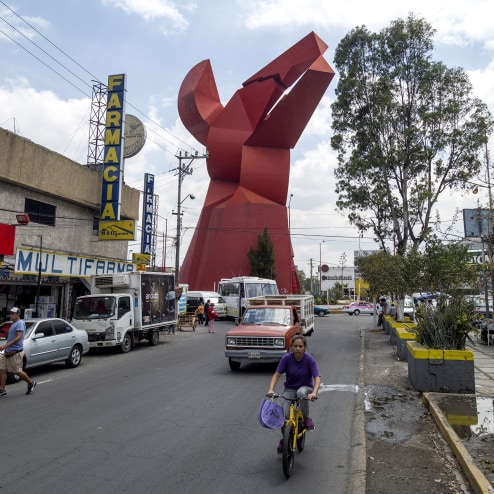
Cabeza de Coyote - a Sculpture in the center of Neza — Photo by Author, Click to Enlarge
Though the developers laid out a street grid and advertised delineated plots for sale, the residents moved in before the infrastructure. Even as the city ballooned in population in the 1960s, much of it was still without official hookups to electricity, clean water, and sewage services. What David refers to as the “banality of poverty” in the neighborhoods that he’s worked in, the daily grind of the working-class in Mexico City, would have referred in Neza at that time to contracting water trucks, perhaps stringing up pirate electrical wiring, and the slow construction of the now ubiquitous 2- or 3-story cinderblock homes of Neza.

A Motorcyclist in Ciudad Neza — Photo by Author, Click to Enlarge
David’s conception of this “banality” is meant as a counterpoint to a sort of Slumdog Millionaire romanticization, by planners and architects, of what are often called “slum” neighborhoods. Paulina brings up Urban-Think Tank and Justin McGuirk’s award-winning research into the famous Torre David in Caracas, an incomplete office tower that was repurposed into housing by the organized poor in that city. (Disclosure: I’ve worked with Urban-Think Tank, though not on that project.) The worry is, of course, by being impressed by the design innovations of marginal communities, we in the planning and design fields ignore their real challenges, their continuing struggle. We revel in their ingenuity in the face of government neglect, and in doing so, it is argued, justify the latter.
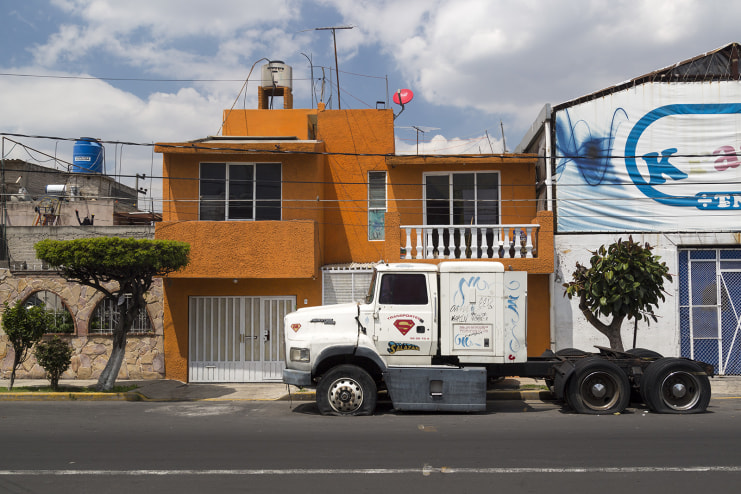
A Home in Neza — Photo by author, Click to Enlarge
I have to disagree with this train of thought, especially when it is brought to its seemingly logical conclusion, which David hints at at the close of his piece. I agree that there are “real dangers to…bulldozing over slums just to erect ugly and barely functional public housing,” but struggle a bit with the idea that the dangers of the “poverty aesthetic” are “even bigger,” or that they amount to “ignoring the pleas of the poor.” This presupposes that we, as outsiders to these communities (and often the very countries themselves), are obligated to intervene architecturally in these people’s homes. I believe the older informal settlements of Mexico City demonstrate that, given time, they can succeed without us.
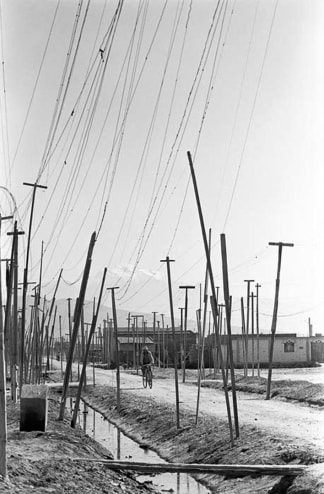
A famous image of Neza in the 1960s by the photographer Hector García
Neza fought for far too long for its basic needs: the provision of services. It’s shameful for a government to allow hundreds of thousands of residents to live adjacent to an open canal pressed into service as a sewer. At the architectural scale, though, allowing them to participate in the construction and design of their homes, if not perfect, does more good than harm. Walking the streets of Neza, the sheer diversity of built form reflects the myriad needs of its residents, and their ability to shape buildings to meet those needs. While few now propose the imposition of modernist housing blocks to replace “slum” housing, as architects, planners, and urban designers did time and time again throughout the 20th century, the economies of scale housing movement of the contemporary era has proven similarly unpalatable.

A home in Neza — Photo by author, Click to Enlarge
My home in Cuautitlan, like the hundreds of thousands of units developed by the government’s Infonavit agency in partnership with large construction and design firms, is a clear attempt to provide an alternative to self-built construction in Mexico City’s periphery. It’s aspiration seems to be that “middle-class” existence that David points to in his writing: a house, a TV. The Infonavit homes are cheap, and though they are limited to workers in the formal sector, those whose work is recognized by the government and taxed, the housing is still available to millions. And yet, across the country, some 400,000 Infonavit homes are vacant, abandoned by their leaseholders or never sold. Their cookie-cutter designs, their often dismal urban realm, and the planning that has led to their placement in the furthest-out regions of cities have proven a resounding failure. Further, where the neighborhoods are occupied, and relatively successful, a process of informalization—a customization of the ‘expert’ plan—quickly takes shape, as I have observed in my former subdivision of Galaxia.
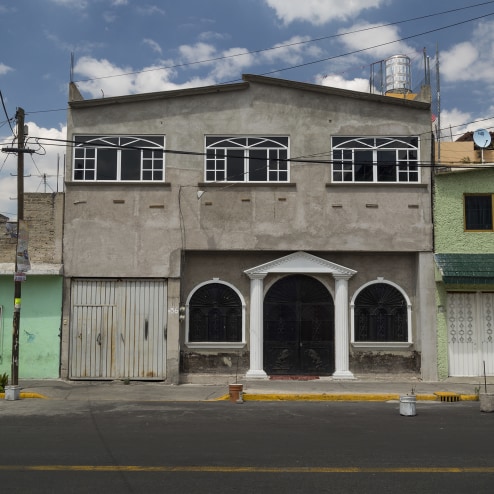
A decorated home in Neza — Photo by author, Click to Enlarge
Neza, after nearly 70 years of history, feels like a normal part of the city. It is banal, in that sense, but I would argue a success. A long process of resident organization and eventual government support has succeeded in connecting homes to the city services. Many homes look finished; it’s remarkable how quickly a bit of plaster and paint can make a grey, cinderblock structure look like a home anywhere else in the city. Neza is quiet streets of homes on what was once an edge of the city. It is, after a long history of regularization, in terms of infrastructure and land titles, normal on its own terms.
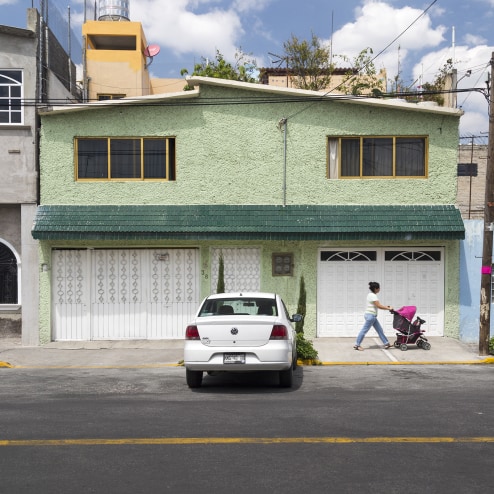
A Home in Neza — Photo by author, Click to Enlarge
Every neighborhood, every home should be aestheticized, if by that we mean looked at, investigated, perhaps photographed, and more than anything, learned from. It’s a matter of respect, I would argue, to recognize achievements in design wherever they crop up. If they’re made out of poverty, or desperation, then the roots of that inequality absolutely demand consideration, though perhaps not by designers. To perpetuate those inequities by failing to provide services to the needy is abhorrent. But to conflate informal architecture with its causes is a mistake. To deny its merit, its ability to provide a basis for self-improvement would be a failure on our part. Finally, though it is far from the most pressing need for most residents, to ignore what informality has done to empower the disenfranchised in the design of their own space would be a sorely missed opportunity.